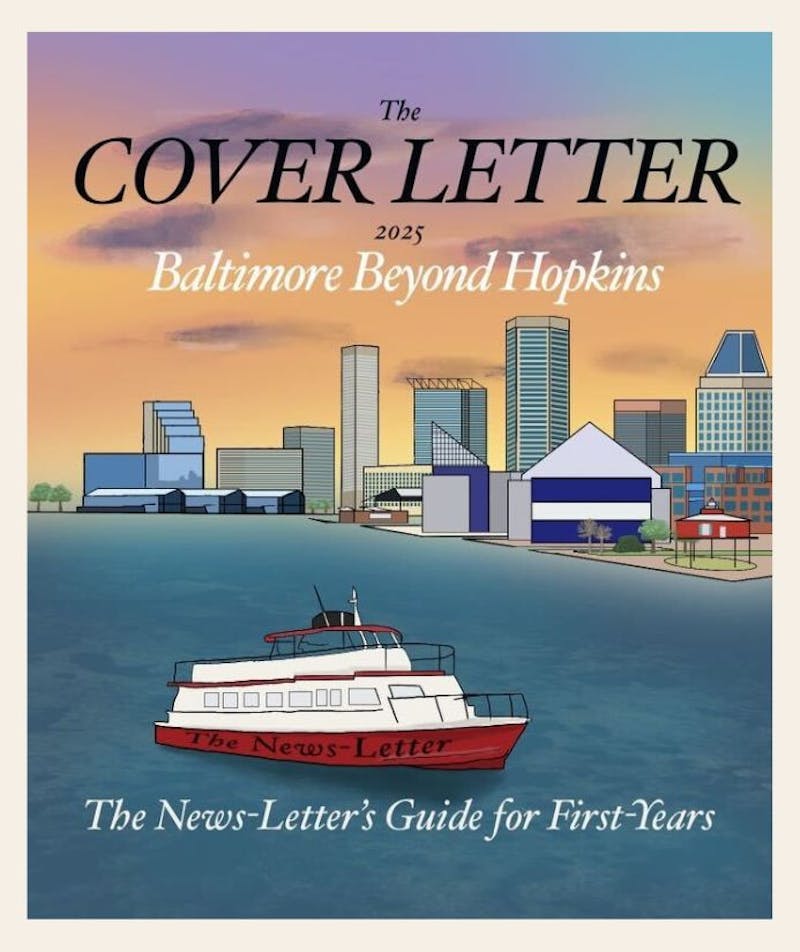The libraries at the Peabody Institute may confuse a Hopkins student. What is an antique piano doing in the Arthur Freidham library? Why do pictures of opera celebrities decorate the walls of the Meyerhoff reading room? For those accustomed to the bleak functionality of MSE, it's hard not to gasp at the beauty of the gilded, six-story balcony of books of the George Peabody library.
The Conservatory's two libraries - the George Peabody library and the Arthur Friedheim library - both maintain interesting collections and offer excitingly silent places in which to do homework.
Head librarian Bob Follet calls the Friedheim, Peabody's music library, "a performance library ... whose greatest strength is in performance music parts and performance editions."
Aside from a few English-language dictionaries, all the materials in the Friedheim support the Conservatory's music curriculum. The tiny (compared to MSE) building stores music reference books and scores on the first level and biographies of musicians on the second level.
Reader Services Librarian Betsy Nelson explained that the Friedheim was geared toward "our performance-oriented students and faculty."
"The majority are coming in to get scores to play," Nelson said. "Some come in because they're assigned to get information for a class. Some have to write papers. Some have listening assignments."
The Friedheim's recordings collections comprises "about 5000 LPs and 5000 CDs" according to grad student and library assistant Jennifer Bowman. "They're mostly classical, all instruments, a lot of vocal music, a small jazz collection and even some pop music."
Hopkins students can't check out recordings but can check out books. However, the real point of taking the shuttle to Peabody is to study in their pretty reading room.
"[Peabody] people do use the library for study, but more often, it's used for research, copying their scores or checking out and listening to CDs," said Jaan Rannick, a double-degree student.
Since most students check out their scores (or pay a dime a page to copy them) and then leave, the library is often very quiet.
The huge windows let lots of natural light in to the Joseph Meyerhoff Reading Room which is decorated by statues of naked ladies, display cases featuring famous musicians and composers, and two instruments: a "decorative" piano which was "a gift from the piano department" according to Nelson, and a theremin, the first electrical instrument.
Unfortunately, the Friedheim keeps strange music-student hours and closes at - gasp! - 10 p.m. Sunday through Thursday, 6 p.m. Friday and 5 p.m. Saturday.
Whereas the Friedheim is nice and quiet, the George Peabody library is spectacular and silent. It's nothing but a big room with beautiful marble floors and five tiers of balconies with gilded columns. Light pours in from the latticed skylight.
Nathaniel H. Morison, the first provost of the Peabody institute, called the stacks in the Peabody library "a cathedral of books." Three hundred thousand rare and old books from Special Collections line the balconies.
"The library is open to everyone - the public and students," said Peabody Library Assistant Cija Jefferson. "However, we keep the door locked ... so you have to ring at the front desk." Hopkins students need to show their J-CARDS at the information desk right outside the library in order to gain entrance.
Students do not need to research in the Special Collections in order to study in the Peabody.
"People definitely come in and read their own stuff sometimes," said Jefferson. "Especially students from the med school. Their campus is a lot closer to here, so they come in. They seem really excited about studying; they say, 'Oh my gosh, I love coming here, it's so much quieter!'"
Scholars also come to study the Peabody's large collection of rare books.
"The Peabody library [collection] was not Mr. Peabody's gift," said Curator of Special Collections Cynthia Requardt. With Peabody's endowment, "the librarians decided to build a collection that represented all branches of knowledge with the latest literature. So, for the 1860s they had the most recent books in history, archeology, art history and science," said Requardt.
"[The librarians] subscribed to a lot of European scientific academies," Requardt said. "Those things are now the history of science. The collection is really quite strong in the history of science.
They also wanted to bring European culture to Baltimore so they purchased lots of books which were reproductions of European art collections."
Although the Peabody is part of the three Hopkins Special Collections libraries, books cannot be moved from Peabody to the more convenient MSE.
"These books don't circulate," explained Requardt. "You have to come and look at them where they live."
Researchers must sit in the study carrels in the atrium and ask librarians or assistants to get the books they're looking for on the upper levels, which are only open to staff members.


